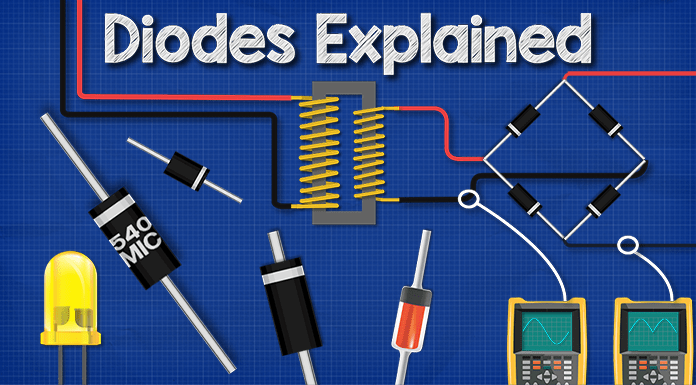
Diodes are intricate yet pivotal components within the realm of microwave technology, playing a fundamental role in shaping the functionality and efficiency of numerous devices that define modern life. Within the intricate landscape of microwave engineering, diodes serve as linchpins, embodying a fusion of physics, engineering prowess, and technological innovation.
To comprehend the depth and breadth of diodes in the microwave domain, an exploration into their fundamental structure, functionalities, and diverse applications is imperative. A diode, essentially a semiconductor device, acts as a one-way valve for electric current, allowing the flow of electrons in a single direction while impeding it in the opposite direction. This innate property makes diodes indispensable across a multitude of applications, especially in the microwave frequency spectrum.
Microwave diodes come in various types, each tailored for specific functions. The most common among them include the PIN diode, Schottky diode, varactor diode, Gunn diode, and tunnel diode. Each type offers unique characteristics and capabilities, contributing significantly to diverse microwave applications.
The PIN diode, for instance, is renowned for its ability to swiftly switch between conducting and non-conducting states, making it indispensable in microwave switches and attenuators. Conversely, Schottky diodes, with their rapid switching speed and low junction capacitance, find their niche in mixers and detectors, crucial components in microwave communication systems.
The varactor diode, operating as a voltage-variable capacitor, finds widespread use in frequency modulation and tuning applications. Its capacity to alter capacitance under varying voltages makes it ideal for voltage-controlled oscillators, an integral part of microwave signal generators and phase-locked loops.
Gunn diodes, notable for their unique negative resistance properties, are pivotal in generating microwave frequencies in the gigahertz range. Their applications span from radar systems to microwave signal generation, owing to their ability to produce high-frequency electromagnetic waves.
Furthermore, tunnel diodes, leveraging quantum tunneling phenomena, showcase exceptional high-frequency performance, making them suitable for microwave amplifiers and oscillators, pushing the boundaries of microwave technology.
Microwave diodes also find extensive application in microwave power transmission, satellite communication systems, radar technology, medical equipment like magnetic resonance imaging (MRI), and even in everyday consumer electronics like cell phones and Wi-Fi routers. Their presence is ubiquitous, albeit often concealed within the intricate architecture of these devices.
The evolution of diode technology has witnessed a continual quest for enhancements in performance, efficiency, and reliability. Engineers and researchers persistently strive to push the boundaries, seeking innovative ways to optimize diode functionalities and integrate them into increasingly compact and efficient systems.
Advancements in semiconductor materials, fabrication techniques, and nanotechnology have ushered in a new era, enabling the development of diodes with superior characteristics. These innovations propel the evolution of microwave technology, fostering faster data transmission, more precise medical diagnostics, improved radar systems, and enhanced communication networks.
Moreover, the interplay of diodes with other components like transistors, amplifiers, and antennas further amplifies their impact, facilitating the realization of cutting-edge technologies such as 5G networks, autonomous vehicles, and the burgeoning Internet of Things (IoT).
However, as with any technological progression, challenges persist. The pursuit of higher frequencies, lower power consumption, and greater reliability necessitates ongoing research and development endeavors. Overcoming hurdles related to heat dissipation, signal interference, and scalability remains paramount for the seamless integration of diodes into next-generation microwave systems.
The future of microwave diodes appears promising, with burgeoning research avenues like quantum diodes, graphene-based diodes, and nanoscale diode arrays offering glimpses of revolutionary possibilities. These explorations hold the potential to revolutionize not just microwave technology but the entire landscape of electronics and communications.
In conclusion, the diode stands as a cornerstone in the intricate domain of microwave engineering, embodying innovation, precision, and versatility. Its evolution and relentless enhancements continue to drive the evolution of microwave technology, powering the devices that define our connected, high-speed, and technologically driven world.
